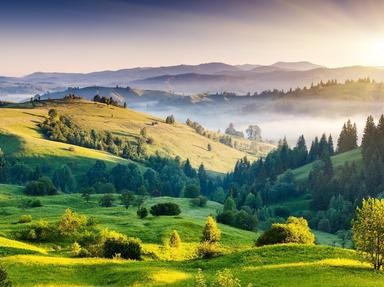Quiz Answer Key and Fun Facts
1. July 5th - "Here I am in front of step-pyramid (Structure 5B18) in the center of the ruins of the Mayan civilization in Chichen Itza. When I tried to scale it, they stopped me! The pyramid is for Kulkulan, a feathered serpent-god, (not one of the Mayans' several jaguar-deities, too bad!) though there is a red jaguar statue inside! Felines were highly regarded in the ancient Americas! I don't think I'll find any jaguars in this karst landscape, however."
Where did Jedda take this photograph?
2. July 6th - "The terrain in this flat country of coastal lowlands (and areas below sea level!) certainly explains why they needed so many windmills to pump the water into the rivers beyond the dikes so that they can farm the land. I'm here in front of the Nile Mill (Nijlânnermolen) in the province of Frisia."
In what country did Jedda photograph this scene?
3. July 7th - "Loved touring the 'la città sotterranea' ("the underground city") of Matera with its 'Sassi' (ancient cave-dwellings) in the region of Basilicata (on the instep of the "boot")! You can also see in the background Matera Cathedral ('il Duomo di Matera'). So much rock, so little water!"
In what country did Jedda find this ancient city?
4. July 8th - "I enjoyed my time in Sibiu and from that village I got a great shot of Negoiu Peak ('Vârful Negoiu') in the Făgăraș Mountains of the Southern Carpathians, a/k/a the Transylvanian Alps. To capture the Tower of the Church Between the Fir Trees way in the distance, I used a telephoto lens, which makes the mountains appear closer than they are."
Can you deduce where Jedda snapped this selfie?
5. July 9th - "Today I learned that it's probably best not to play with mountain gorillas. Luckily I wore this one out in the dense vegetation at the bottom of the mountains at the Volcanoes National Park. Then I sneaked away and looked at Mt. Bisoke, one of the park's five volcanoes. I'm glad I wasn't here when the park was used as a battlefield during the civil war of 1990-94."
What landlocked war-torn country in Central Africa did Jedda visit?
6. July 10th - "I loved exploring the forests of the village of Gbogolo and Banco National Park, and naturally I visited the coast. No gorillas here, but in the woodlands and savannas around Mount Nimba I did see elephants (which makes sense). And I avoided the pygmy hippos of Taï National Park."
Can you deduce what country Jedda is talking about?
7. July 11th - "Here is typical scenery of a tropical African country formerly known as Portuguese Guinea with lots of low coastal Atlantic plains that rise into a mosaic of forest, savanna, and grassland. The road may lead to the mountains in the east, eventually, but I'll never know for sure. I skipped the Bijagos Archipelago, too, because I was afraid of the saltwater hippos."
What is the correct name of the country where Jedda took this picture?
8. July 12th - "I should have just stayed with the Pyramids, but no, curiosity overtook me, and I had to explore the Qattara Depression in the Western Desert (part of the Sahara west of the Nile). Where are the periodic floods that I heard about? All I see are sand dunes. Water, water!"
Where is the Qattara Depression (and poor Jedda)?
9. July 13th - "Looking for more remains of those old Mayan city states from the 1st millennium AD, I wandered from Guatemala into this small country that borders it. Luckily, it wasn't hurricane season as I borrowed a helicopter and I snapped this pic of the Great Blue Hole (I don't like to get wet, so I didn't go diving.) I practiced my Spanish, but it turns out English was sufficient. Good thing, because I found out I can't get to the Pacific Ocean from here."
In what Central America country did Jedda find this beautiful sight?
10. July 14th - "Back in Africa one last time. (Whew, this Bus travels a crazy route!) This time I visited the agricultural countryside, where I met some nice Maasai people and shot these lovely hills of Kapsowar (with Mt. Kipkinurr in background). Then I met a kindred spirit at Nairobi National Park; the lioness on the grass plain was kind enough to hold still for the photo. (Luckily, no hippos.)"
Wow, two photos for this one! What was Jedda's last destination?
Source: Author
gracious1
This quiz was reviewed by FunTrivia editor
agony before going online.
Any errors found in FunTrivia content are routinely corrected through our feedback system.
